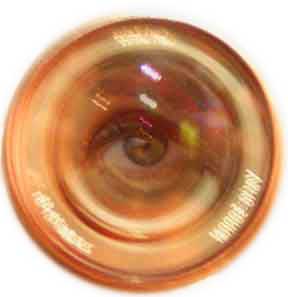
Montreal—Read anything about this city’s vibrant dining scene and you’ll be pointed to Au Pied de Cochon. You’ll also be warned: dining here entails a serious lapse in a heart-healthy diet. Pigs, of course, are featured heavily on the menu. Foie gras is the restaurant’s other specialty.
I don’t eat pigs, or any four-legged animals. I’m not big on two-legged winged creatures, either. But foie gras makes me swoon. In Montreal, it comes from ducks, not geese, and I find it slightly inferior. Slightly.
At Au Pied de Cochon, chef Martin Picard puts foie gras in everything: pigs’ feet, pizza, and a weird Québécois dish called poutine. Poutine is a pile of fries and cheese curds covered with sauce, and often meat. What are cheese curds? I can’t think of an American equivalent. Cottage cheese curds are smaller and softer, and creamed. Indian paneer is similar: firm, dryish, squeaky lumps of milk soured by an acid. They’re good.
Au Pied de Cochon’s version of poutine starts with potatoes fried in duck fat and topped with a large lobe of seared foie gras. And get this: the sauce is made of foie gras puree, egg yolks, and cream. The eyes and mouth say yeah! while the heart runs for cover.
It was fabulous. Bob and I shared a plate, and we could have walked away satisfied after just the foie gras poutine and glasses of chenin blanc.

Duck in a can
But no. We had to experiment. Bob had a fresh bluefin tuna dish, rare and complicated. I had duck in a can. My chef brother-out-law had told me about it. The waiter brought out a piece of toasted bread covered with celery root puree. He also brought a hot sealed can, which he opened with a can opener at the table.

Slowly and ceremoniously, the steaming contents were dumped atop the bread. A duck breast, a large lobe of foie gras, buttered cabbage, a head of garlic, fresh thyme, and mysterious juices were cooked to a fragrant, unidentifiable heap that looked sort of… well, pre-digested.

It was not a pretty sight, though it smelled divine. The structure stood tall on its bread foundation for a minute, until the bread soaked up enough fat and juices to lose its ability to support such a heavy burden. Neighboring diners’ eyes bugged out. Mouths gaped. Oohs and ahs for the spectacle of the duck.

Needless to say, it was delicious. The duck was chewy and gamey, the foie gras meltingly luscious, the garlic an occasional bright surprise, and the cabbage a vegetal counterbalance. The celery root and juicy-crusty bread could have been a meal on it’s own. As you can see, the dish was enough for six people.
No surprise that the combination, foie gras poutine followed by duck in a can, was not a wise choice; I knew that when I ordered. I just had to try both dishes. There were many others I managed to pass up.

So this is my recommendation. Go to Au Pied de Cochon. If duck in a can doesn’t intrigue you, try one of their spectacular seafood platters. Or probably anything on the menu.



Was that seafood tower (last pic), the Le Gros Verrat 350.00 $?
Thanks
Jane,
The process of “gravage” which is the feeding of ducks or geese to fatten their liver is actually a very natural process. Those birds are able to swallow corn cobs whole with no difficulty and their throats are so flexible and stretchable that the funnel used to “force” feed them causes them no discomfort at all. The ducks and geese stuff themselves in preparation for long migrations; this is simply assisted a bit by the trained people who travel from farm to farm to do the gravage.
Please don’t call this cruel, not when we in the US are so guilty of using factory farms to completely deprive livestock of any semblance of a normal life.
Simon, I’d recommend a visit to Au Pied de Cochon for Duck in a Can. Maybe email the restaurant (link above) and ask if they sell it, or would sell you a special can. I doubt it, though. You CAN buy a canning machine, however, and make it yourself!
Is it possible to buy “Duck in a can” ? Perhaps on line? thx!
I can only hope that you do not know how foie gras is produced. HOw can any himan being who knows eat it. how did you lose your comapssion for suffering of living creatures
‘I don’t eat pigs, or any four-legged animals.’
Good for you. ;)
The charming boiled pigs’ heads in the bucket picture accompanies the recipe for Beans and Meatball stew in the APDC cookbook. That’s the recipe where the second instruction reads “Using a saw, cut off the top of the piglets’ heads in order to remove the brains.” Beans, brains and meatballs too. Yum.
Fun to read. I’m glad I have you for the total sensory experience . I could never get past the visual as you know!
Heart attack ready to happen … May I suggest you bring along your trusty AED ( automated external defibrillator)
YELS
All I can say is YUCK. And that even off the street you must be a woman of courage. AND, if you were an eater of the four footed, you probably would have tried one of the charming pig heads in the bucket. What culinary adventure have you not tried!